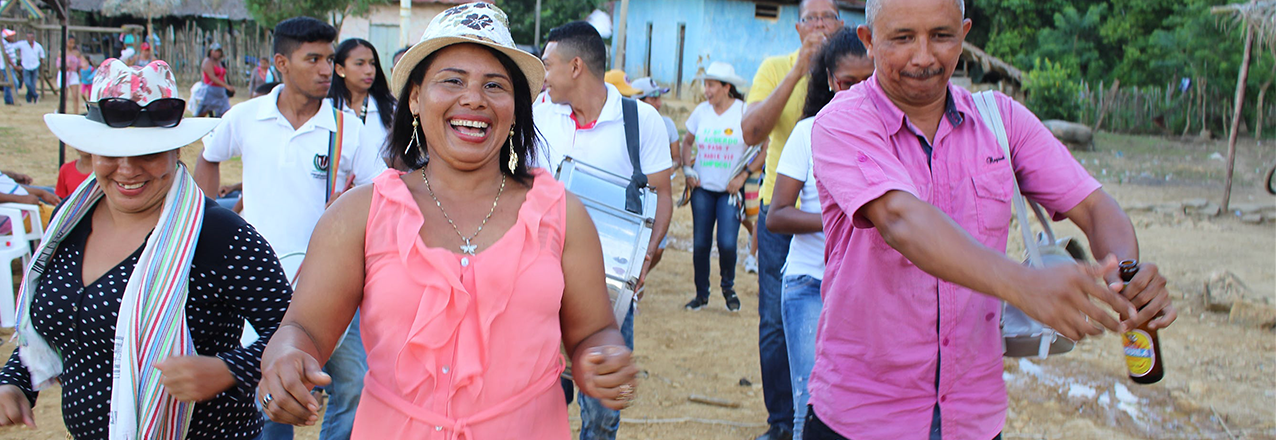A 2016 land restitution sentence brought little solace, but when government agencies began delivering on orders, despair turned to joy and inspired a party in this forgotten village.
Originally appeared on Exposure.
For the last seventeen years, residents of Chengue have found few reasons to dance. They fled their small village in the heart of the tropical hill country of northern Colombia after living through a bloody massacre perpetrated by a group of paramilitaries in 2001. That day, 60 uniformed killers ended the lives of 27 villagers with hammers, rocks, and machetes, and burned down dozens of houses. They told the survivors to never return, because from that point forward.
FIESTAS PATRONALES
In 2017, hundreds of Chengueros proved their attackers wrong and organized the first fiestas patronales in more than 20 years. On the same plaza where their fathers, brothers, uncles, and cousins were killed, residents danced to the local rhythms of porro and gaita music. The historic festivities—held in the first week of July—were colorful scenes of people dancing, women stirring pots of sancocho (turkey soup), poker-faced elders playing cards and drinking beer, excited children flipping marbles on the roads, and agile horseback riders on display.
The fiesta was the latest attempt by Chengue families to show one another that their former lives are not gone—rather, those two-day bacchanals that once made Chengue famous are back with the same pomp and pageantry of days past.
Chengue is located in the region known as Montes de María, where, following the demobilization of Colombia’s brutal paramilitary groups in 2008, the government began the slow process of land restitution and reparations for victims. A decade after the massacre, the government created the Land Restitution Unit (LRU), which has set out to recognize the land rights of victims, provide reparations, and allow victims to return to their homes and their lives. More than 10,000 people who survived the violence and were forced to leave their homes have since processed land restitution claims with the LRU.
By the time the LRU was created, the more than 300 Chengueros had nearly lost all hope for any justice related to the massacre, a tragedy that, in their eyes, seemed tethered to a corrupt and bureaucratic system. In 2006, a local judge determined that the police and the Colombian armed forces did not do their job to prevent the attack, awarding a settlement of more than US$1 million. Eventually, approximately 100 surviving families were paid around US$10,000 each, a paltry sum compared to the amount the court originally awarded. Then In 2008, the man who had ordered the massacre, Juancho Dique, was sentenced to just eight years in prison as part of the government’s paramilitary demobilization program; He was released in 2015.


